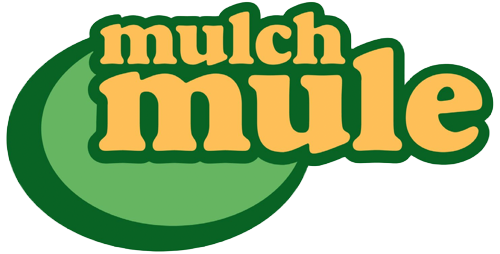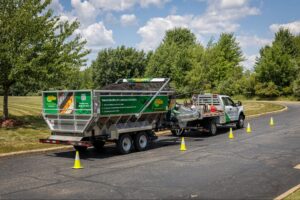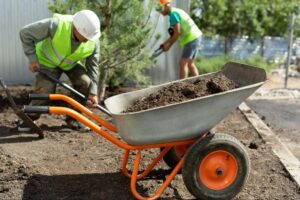In today’s fast-paced landscaping industry, efficiency is essential. With projects growing in scale and complexity, traditional labor-intensive methods are becoming less sustainable. Rising labor costs, tighter deadlines, and a shortage of skilled workers are significant challenges for even the most experienced teams. To remain competitive, landscaping businesses are increasingly exploring technological solutions that streamline operations while also confronting potential costs and integration challenges.
Modern automation offers a promising pathway to address many of these challenges. By integrating advanced yet user-friendly equipment, companies can simplify tasks such as material loading, unloading, and distribution while reducing physical strain on staff. One innovative example is the Mulch Mule Trailer—a tool designed to automate material handling and transform everyday operations.
This article explains how automation-based landscaping solutions can potentially reduce labor costs, accelerate project timelines, and enhance overall efficiency, while noting that realizing these benefits depends on careful planning and workforce upskilling.
The Role of Automation in Landscaping Businesses
The modern landscaping industry demands that businesses find smarter and faster ways to work. Manual methods for moving heavy, bulky materials not only slow progress but also increase fatigue and the risk of injury. Faced with a shrinking pool of skilled labor, many companies are turning to automation as part of their broader strategy to improve operations—though the benefits may vary depending on investments, integration strategies, and operational contexts.
Automated equipment helps replace repetitive manual tasks with machines that operate quickly and with precision. For example, the Mulch Mule Trailer is designed to streamline the process of loading and distributing mulch or soil. Its design features—including a live floor system and rapid unloading functionality—are engineered to simplify material handling. While such features are intended to enhance efficiency, the extent of performance improvements depends on how the system is managed within larger operational workflows.
Benefits of Automation for Landscaping Operations
Automation consolidates multiple potential benefits into one process. Among the advantages often highlighted are:
Reduced labor requirements and improved workforce allocation
– Automation can enable smaller crews to focus on more specialized tasks, though companies should plan for potential upfront investments and necessary training.
Increased productivity and faster project completion
– Enhanced material handling may help to shorten project timelines, with the understanding that reported benefits are based on testimonials rather than comprehensive, industry-wide studies.
Enhanced safety and improved employee satisfaction
– By reducing heavy lifting and repetitive tasks, automated systems can lower the risk of injury. However, achieving optimal safety outcomes requires continuous monitoring and scheduled maintenance.
Year-round versatility
– Automated systems can support various seasonal needs, from spring mulch distribution to fall debris management, provided that their integration into existing processes is carefully planned.
By addressing these challenges, automation is changing landscaping operations—not as a universal cure-all, but as one of several tools that can reduce labor costs and physical strain when implemented thoughtfully.
Key Features of the Mulch Mule Trailer
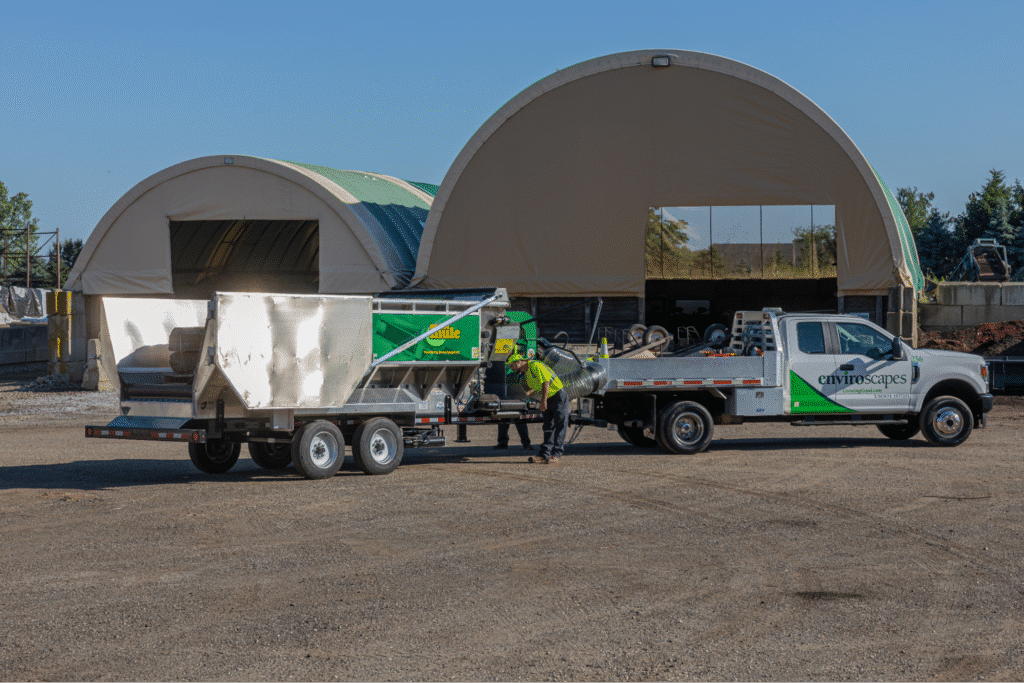
Mulch Mule’s innovative design addresses several practical challenges of material handling in landscaping operations.
Live Floor System for Rapid Unloading
At the heart of the Mulch Mule Trailer is its live floor system—a motorized conveyor designed to move materials efficiently from the hopper to the discharge point. This mechanism reduces the need for manual labor and speeds up the unloading process.
Curb-Side Discharge for Precise Material Placement
The trailer’s curb-side discharge capability allows for controlled placement of materials. Using a handheld remote, operators can manage the flow of mulch, soil, or debris precisely, ensuring effective distribution in tight spaces such as residential or commercial areas.
Generous Hopper Capacity
With a 15 cubic yard hopper, the Mulch Mule Trailer minimizes the frequency of reloads. This capacity is particularly advantageous for extensive projects, ensuring more continuous operations and reduced downtime.
Reliable Engine and Hydraulic Support
Powered by a robust Honda GXi390 engine and supported by a hydraulic jack system, the Mulch Mule Trailer is built for reliability under challenging conditions. These dependable components contribute to smoother operations when regular maintenance is conducted.
Optional Vacuum Debris Loader
For added versatility, the trailer can be equipped with an optional vacuum debris loader. This feature aids in collecting leaves, branches, and other debris, thereby simplifying material transport and post-project cleanup. Additional attachments & upgrades are also available for the Mulch Mule trailer.
Bidirectional Live Floor Action
The live floor system operates in both forward and reverse, making the trailer flexible enough to handle various materials—from heavy aggregates to lighter mulch—across a range of landscaping tasks.
Watch this video below to learn how the Mulch Mule gets what you need where you need it with speed and efficiency. This innovative landscaping machine transports and distributes soil, mulch, leaves, debris, stone and aggregate to save you time and money.
Practical Applications for Landscaping Businesses
The potential benefits of automation extend to many areas within landscaping. Here are some scenarios where equipment like the Mulch Mule Trailer may prove advantageous:
Landscaping and Lawncare Companies
For businesses managing multiple small projects in a single day, automated material handling can streamline routine tasks like debris removal and bulk transport. While some operators report increased efficiency, the degree of improvement may vary and should be evaluated against specific operational needs.
Property Management and Homeowners Associations
Property managers and HOAs overseeing numerous outdoor spaces may benefit from automated solutions that facilitate distributing mulch or clearing leaves over extensive areas. These technologies are designed to ease logistical challenges and help maintain attractive communal spaces.
Nurseries and Garden Centers
Nurseries might take advantage of efficient bulk handling for materials such as soil, decorative stones, or compost. The precision and speed of automation can help in reducing cross-contamination risks and enhance the focus on cultivation and customer service.
Golf Courses and Public Parks
In large public spaces such as golf courses and parks, rapid unloading and debris collection functions are particularly valuable. The ability to handle large volumes with precise control supports the upkeep of high-traffic areas efficiently.
Contractors with Diverse Needs
Contractors handling varied projects can benefit from equipment that flexibly addresses different tasks—delivering mulch for landscaping on one project and managing debris on another—potentially leading to cost savings and streamlined logistic processes.
Financial and Operational Perspectives on Automation
The adoption of landscaping technology and advanced equipment contributes to more efficient operations. These efficiency gains can be associated with reduced labor requirements, decreased injury risks, and shorter project turnaround times.
Implementing automation can also bolster a company’s image as an innovative enterprise. Investing in automated solutions may enhance both operational practices and employee morale. When maintained properly and integrated effectively, these systems offer long-term value and support customer satisfaction while positioning a business for future operational growth.
4 Steps to Embrace Automation in Your Landscaping Business
Transitioning to an automated system requires thoughtful strategy. Consider these key steps:
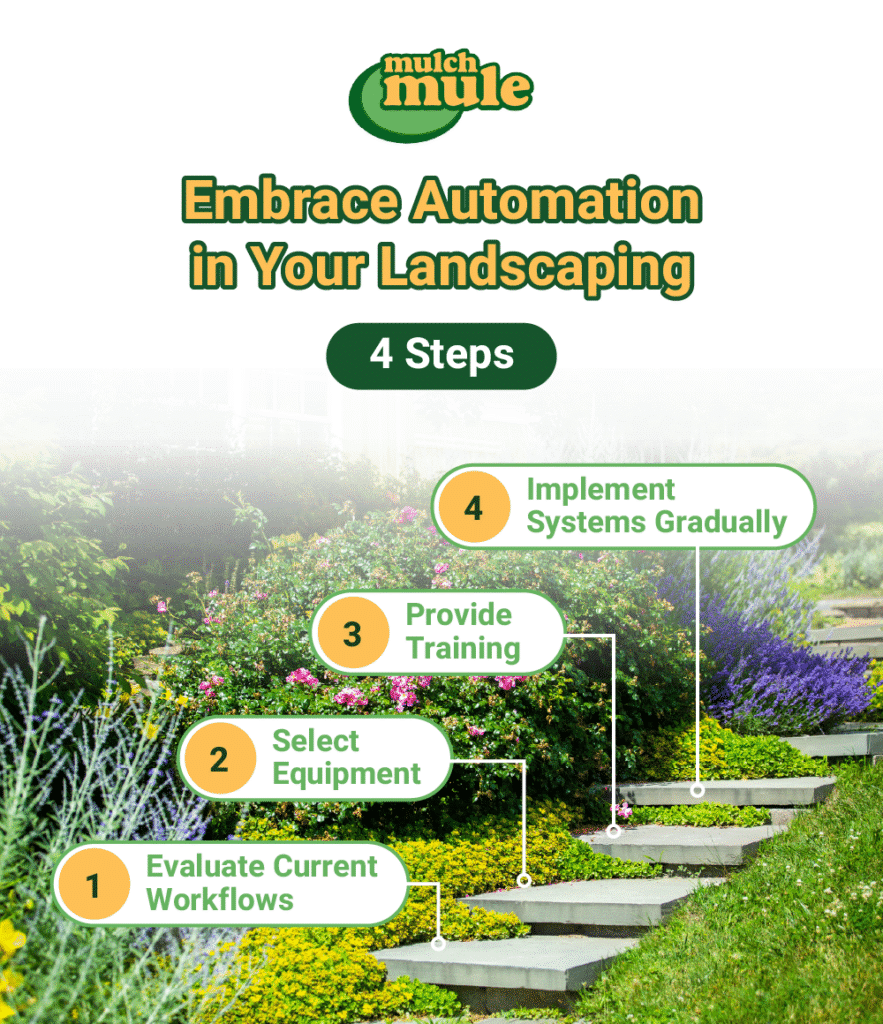
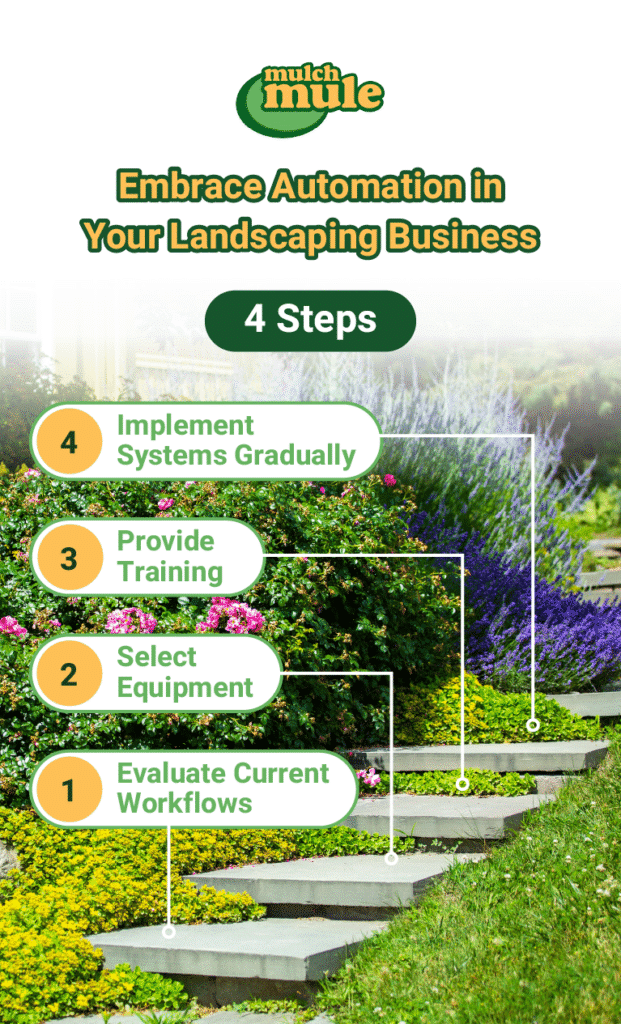
- Evaluate current workflows to identify areas where automation might have the greatest impact.
- Select equipment that best meets your operational needs, taking into account factors like material volume and site configuration.
- Provide comprehensive training so that staff become proficient with new machinery and address any necessary upskilling requirements.
- Implement new systems gradually—starting with critical tasks—to clearly assess performance benefits before broader adoption.
These steps help ensure that automation not only boosts efficiency but is also integrated smoothly and sustainably into daily operations.
Ongoing Maintenance and Support
To maintain the potential benefits of automation, regular maintenance and proactive support are essential. Routine inspections, scheduled servicing, and timely access to parts and warranties keep equipment functioning at its best. Prioritizing proper upkeep safeguards your investment and supports continuous productivity throughout the year.
Future Trends and Innovations in Landscaping Automation
As landscaping technology evolves, future trends indicate a greater integration of IoT devices and smart sensors with traditional equipment. Emerging automated systems may incorporate real-time performance monitoring, predictive maintenance features, and adaptive operational adjustments for improved efficiency.
Data analytics is also anticipated to play a larger role in optimizing workflows, reducing downtime, and better anticipating seasonal demands. Advanced software integrations could eventually allow centralized management across multiple machines and job sites, keeping business operations ahead of the technological curve.
Adopting a Culture of Innovation in Landscaping

Embracing automated equipment is more than simply investing in new machinery—it involves fostering a culture of continuous innovation. Encouraging teams to identify efficiency improvements, share workflow-enhancing ideas, and consistently invest in training creates an environment where new technologies can thrive. Such a culture supports ongoing innovation and helps maintain a competitive edge in a rapidly evolving market.
Transform Your Team with Automation for Landscaping Operations
Automation is reshaping the landscaping industry by reducing reliance on manual labor, enhancing safety, and potentially streamlining operations. Mulch Mule exemplifies how advanced material handling solutions may contribute to smoother workflows and operational benefits, although the full extent of its impact can vary from one operation to another.
Now is the time to assess your current workflows and explore innovative automation solutions that can pave the way toward a safer, more efficient, and possibly more profitable future. Reach out to Mulch Mule today to learn how these technologies might complement your operations as you position your business for success in an increasingly technology-driven market.
